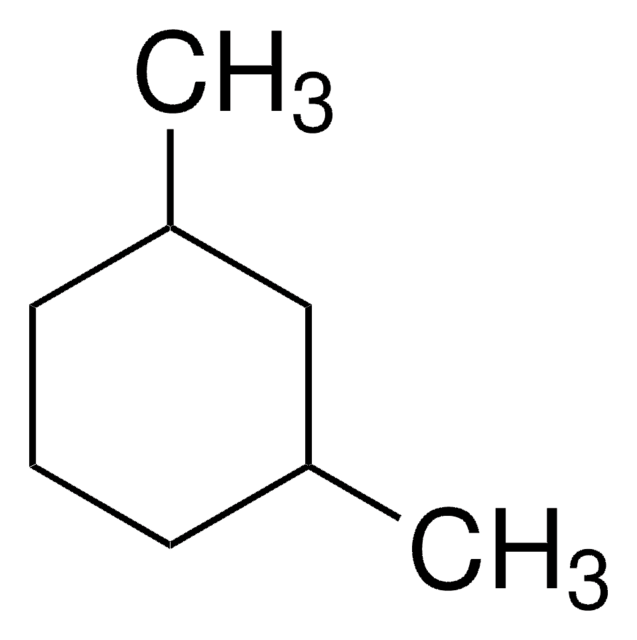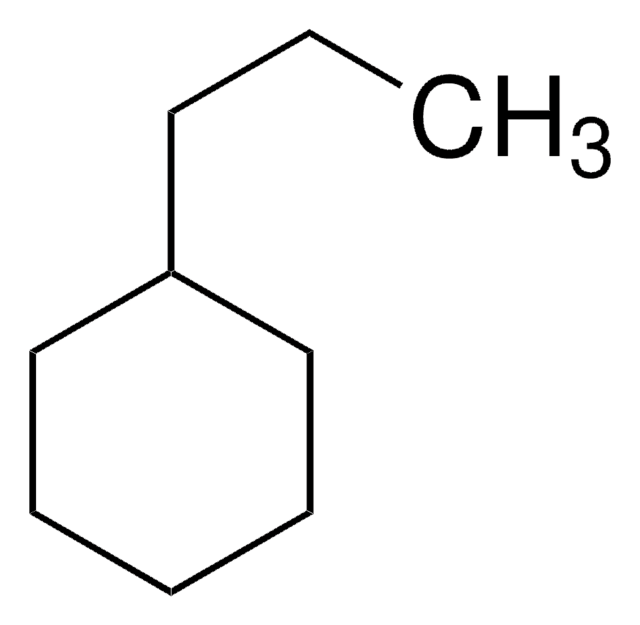About This Item
Recommended Products
vapor pressure
25 mmHg ( 37.7 °C)
Quality Level
assay
≥99%
form
liquid
autoignition temp.
504 °F
expl. lim.
6.6 %
refractive index
n20/D 1.432 (lit.)
bp
130-132 °C (lit.)
mp
−111 °C (lit.)
density
0.788 g/mL at 25 °C (lit.)
SMILES string
CCC1CCCCC1
InChI
1S/C8H16/c1-2-8-6-4-3-5-7-8/h8H,2-7H2,1H3
InChI key
IIEWJVIFRVWJOD-UHFFFAOYSA-N
Looking for similar products? Visit Product Comparison Guide
Application
- A model for alkyl-substituted cycloalkanes to study their rate coefficients of reaction with OH radicals and Cl atoms.
- A model for light hydrocarbons to investigate their catalytic cracking performance.
- An organic monomer precursor to synthesize organic-inorganic hybrid polymer thin films by plasma enhanced chemical vapor deposition.
signalword
Danger
hcodes
Hazard Classifications
Aquatic Acute 1 - Aquatic Chronic 2 - Asp. Tox. 1 - Flam. Liq. 2 - STOT SE 3
target_organs
Central nervous system
Storage Class
3 - Flammable liquids
wgk_germany
WGK 3
flash_point_f
64.4 °F - closed cup
flash_point_c
18 °C - closed cup
ppe
Eyeshields, Faceshields, Gloves, type ABEK (EN14387) respirator filter
Choose from one of the most recent versions:
Already Own This Product?
Find documentation for the products that you have recently purchased in the Document Library.
Customers Also Viewed
Protocols
GC Analysis of Hydrocarbons in Gasoline on Petrocol® DH, Isothermal
Our team of scientists has experience in all areas of research including Life Science, Material Science, Chemical Synthesis, Chromatography, Analytical and many others.
Contact Technical Service















